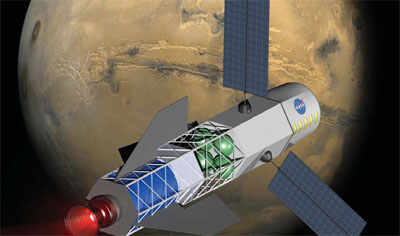
A long-lost moon could explain Mars’ unusual shape and extreme terrain, according to a new hypothesis proposed by Michael Efroimsky, an astronomer at the US Naval Observatory.
In a paper submitted to the Journal of Geophysical Research: Planets, Efroimsky suggests that Mars may have once had a much larger moon, named Nerio, which could have dramatically altered the planet’s landscape.
Mars is known for hosting some of the most extreme terrain in the solar system, including Olympus Mons, the tallest volcano, and Valles Marineris, the largest canyon.
One of the most notable features is the Tharsis bulge, a massive highland region near Mars’ equator. Opposite this region lies Terra Sabaea and Syrtis Major, further highland areas and a large shield volcano.
These features create an unusual imbalance in the planet’s shape, which Efroimsky believes could be explained by Nerio’s gravitational influence.
“The new study the possibility of a young Mars having had a massive moon, which synchronised the rotation of Mars, and gave Mars an initial asymmetric triaxiality to be later boosted by geological processes,” the paper read.
Efroimsky proposes that the large moon’s mass could have caused tidal bulges in Mars’ molten surface, similar to how Earth’s moon raises tides in our oceans.
However, because Mars is smaller than Earth, it cooled more quickly, locking the planet’s surface into its current distorted form. Nerio’s presence could have set the stage for the Red Planet’s dramatic landscape, with subsequent geological processes enhancing the initial deformations.
The fate of Nerio remains a mystery. Efroimsky suggests the moon could have been destroyed in a collision, leaving behind Mars’ two small moons, Phobos and Deimos, or it may have been ejected from the solar system due to gravitational interactions with another body.





888711 213062It is hard to uncover knowledgeable men and women on this subject, but you sound like you know what youre talking about! Thanks 693293